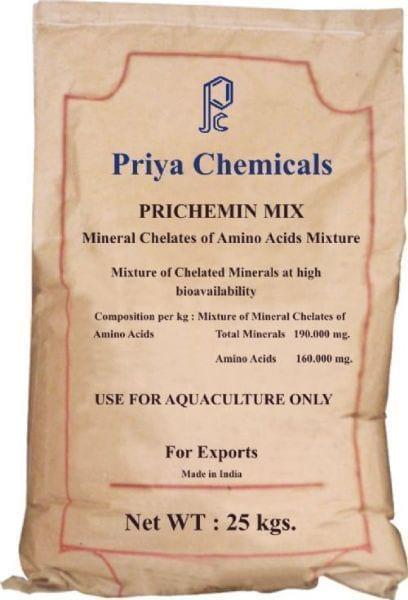Explore all the information on
Fish feed and nutrition
Welcome to the page about Fish feed and nutrition of Engormix; a source of knowledge on Fish feed and nutrition.
Introduction Fish are the most feed converser than all terrestrial animals' species. So, the world population consumes 17% of their food protein from fish. Nowadays, aquaculture production in Egypt reached to 80% of the total local fish production (GAFRD, 2016 and Abdelhamid, 2019b). Milstein and Svirsky (1996) reported that an appropriate-adequate fish density will utilize the available resources efficiently and fish environment relationships and minimize the antagonistic ones....
Comments : 0
Recommendations: 1
INTRODUCTION Aquaculture is the fastest growing sector of food animal production in the world and supplies an increasing percentage of the total production of fish for human consumption ( FAO, 2012 ). Nowadays, Egyptian fish production from aquaculture contributed by 80% of total fish production which amounted 1.8 million metric tons ( Abdelhamid, 2019a ). Tilapia in different countries is farmed with fertilization and/or supplementary feeding. Feed is the highest...
Comments : 1
Recommendations: 2


PRICHEMIN MIX
Priya's PRICHEMIN MIX is a mineral supplement for aquaculture. It consists of a mix of mineral chelats from aminoacids
Suggested link
INTRODUCTION Aquaculture is the fastest growing source of animal protein for humans. However, as this industry continues to develop, several inherent challenges will arise. Foremost is the need for increased production of suitable and sustainable feeds. Aquaculture has long been criticized for ‘‘using fish protein to make fish protein’’ ( Naylor et al., 2009 ). This ‘‘fishmeal trap’’ ( New & Wijkström, 2002 )...
Comments : 5
Recommendations: 2
Spirulina Arthrospira is a planktonic blue-green algae (Cyanobacteria) found in warm water alkaline volcanic lakes and is rich in raw protein and seven major vitamins: A1, B1, B2, B6, B12 (one of the best natural sources for B12, although the bioavailability its B12 is in dispute by many researchers), C and E. It naturally contains beta-carotene, color enhancing pigments, and whole range of minerals. In addition, Spirulina has a 62% amino acid content and contains all essential fatty acids...
Comments : 5
Recommendations: 1


PRICHEMIN MIX
Priya's PRICHEMIN MIX is a mineral supplement for aquaculture. It consists of a mix of mineral chelats from aminoacids
Suggested link
INTRODUCTION Like other animal production systems, aquaculture has developed into a highly globalized trade-dependent industry, therefore as global fish farming continues to increase, the need for formulating nutritionally balanced and cost-effective diets with high-quality protein source is important (Furuya et al., 2010). In fact, nutritional value of protein in the diet for fish is influenced by its amino acids(AA) compositions, therefore, the quality...
Comments : 0
Recommendations: 0
Introduction Press and Evensen (1999) mentioned that species variation in the morphology of the immune system is to be expected, given the large number and diversity of species within the teleost fishes. Several external and internal factors can influence the activity of innate immune parameters. Temperature changes, handling and crowding stress can have suppressive effects on innate parameters, whereas several food additives and immunostimulants can enhance different innate...
Comments : 0
Recommendations: 1


PRICHEMIN MIX
Priya's PRICHEMIN MIX is a mineral supplement for aquaculture. It consists of a mix of mineral chelats from aminoacids
Suggested link
Olivier Decamp (INVE Aquaculture) discussed the issues and challenges in this activity, as well as alternatives and solutions....
Comments : 0
Recommendations: 2
Originally published in Aquafeed In the autumn 2013 edition of Aquafeed, Dr. Nabil Said of Insta-Pro International discussed the new MS3000 Medium Shear Extruder for making high-quality, shaped, aquafeed pellets (see Aquafeed, autumn 2013, volume 5, issue 3, pages 41-45). In it, he described the market conditions that led to the development of a low cost, easy to operate, and rugged equipment...
Comments : 0
Recommendations: 0


PRICHEMIN MIX
Priya's PRICHEMIN MIX is a mineral supplement for aquaculture. It consists of a mix of mineral chelats from aminoacids
Suggested link
Introduction Dietary protein is the most expensive ingredient in fish feed which is required to sustain normal growth of aquatic animals. Feed accounts for 40-60% of the production costs in aquaculture, with protein sources accounting for a significant proportion of this cost ( Fotedar , 2004). The use of rich protein diets above optimum levels, increases operating costs required to raise fish. Optimum protein levels in biofloc systems should be evaluated in...
Comments : 0
Recommendations: 0
1. Introduction Siganids (rabbitfishes) are a small family of algaevorous fish that inhabit the tropical and subtropical waters of the Middle East and Indo-Pacific region (Saoud et al., 2007). The marbled spinefoot rabbitfish, Siganus rivulatus, has a promising potential opportunity for aquaculture due to its herbivorous feeding habits and acceptability of artificial diet (Barakat et al., 2011; Abou-Daoud et al., 2014). Accordingly, the farming of siganids could be economically...
Comments : 0
Recommendations: 0


PRICHEMIN MIX
Priya's PRICHEMIN MIX is a mineral supplement for aquaculture. It consists of a mix of mineral chelats from aminoacids
Suggested link
SPAROS is organizing another free webinar on our nutritional tool FEEDNETICS TM, this time for the Aquafeed sector, on October 1st, 2020. SPAROS has been presenting a series of webinars to show a diverse audience how our nutritional tools can help users to predict the effects of nutritional and environmental factors on fish...
Comments : 0
Recommendations: 0
Introduction The omnivorous Nile tilapia ( Oreochromis niloticus ) is an important commercially farmed species worldwide due to characteristics such as strong disease resistance, fast growth and the ability to accept lower cost diets with terrestrial-based ingredients ( Ng and Romano, 2013 ). Fish production costs are increasing while fish price in the market is relatively stable ( Tacon and Metian, 2015 ). Increased price of fish feed is one of...
Comments : 0
Recommendations: 2


PRICHEMIN MIX
Priya's PRICHEMIN MIX is a mineral supplement for aquaculture. It consists of a mix of mineral chelats from aminoacids
Suggested link
Introduction. Organic selenium (OSe) has an advantage in reducing oxidative stress in comparison to inorganic forms and incorporates into skeletal muscles, kidney, liver, and gastrointestinal mucosa proteins as selenomethionine and selenocysteine. It is an essential micronutrient for fish (Martinez-Alvarez et al., 2005). Yeast cell wall has been proven as an immunostimulant and health improver for fish and other animals (Selim & Reda, 2015). Materials...
Comments : 1
Recommendations: 1
Aquaculture is the most efficient and fastest growing source of animal protein for humans but its continued sustainability is of grave concern. The continued reliance on fishmeal to support the growth of aquaculture is not an option anymore as many of the world’s fisheries are maximally exploited or in decline. Alternative protein sources to substitute for fishmeal have been developed, and current options primarily include those derived from plants. The use of these plant-based...
Comments : 2
Recommendations: 1


PRICHEMIN MIX
Priya's PRICHEMIN MIX is a mineral supplement for aquaculture. It consists of a mix of mineral chelats from aminoacids
Suggested link
...
Comments : 0
Recommendations: 0
Dr P. E Vijay Anand from the U.S. Soybean Export Council speaks abou how we can make aquaculture feed milling better in the future, especially in the coming three or four years at the 2nd Global Milling Conference Programme, India 2014....
Comments : 3
Recommendations: 1


PRICHEMIN MIX
Priya's PRICHEMIN MIX is a mineral supplement for aquaculture. It consists of a mix of mineral chelats from aminoacids
Suggested link
Leo Obaldo (Hawaii Department of Agriculture) discussed existing management practices and alternative sources of feed like Black Soldier Fly, during 2019 NIAA Annual Conference: Animal Agriculture - Innovation, Technology and Consumer Engagement in Des Moines, Iowa, USA....
Comments : 5
Recommendations: 1
Immune stimulation in aquaculture was a subject on the board when I joined Phileo some years ago. One of my first tasks was to assess the products we had available in the group as immune stimulants in aquaculture species. Immune stimulation in aquaculture is a confused...
Comments : 7
Recommendations: 9


PRICHEMIN MIX
Priya's PRICHEMIN MIX is a mineral supplement for aquaculture. It consists of a mix of mineral chelats from aminoacids
Suggested link
Introduction Nowadays aquaculture in Egypt supplies ca. 80% of human fish consumption. Egypt occupies the tenth rank all over the world concerning aquaculture production ( FAO, 2016 ). But the Aqua-feeds are shorter than the demands, besides their expensive costs; therefore there is a need to recycle and reuse all possible and available field and industrial by-products that have a nutritional importance for fish ( Koeleman, 2018a & b ). Since fish are the most feed...
Comments : 1
Recommendations: 0
One problem in fish-farming is the lack of knowledge on how to produce floating pellets for Tilapia feeds. I would like to hear different skills from others on what feed ingredients are good for floating pellet production. Thanks for your time ...
Comments : 0
Recommendations: 0










